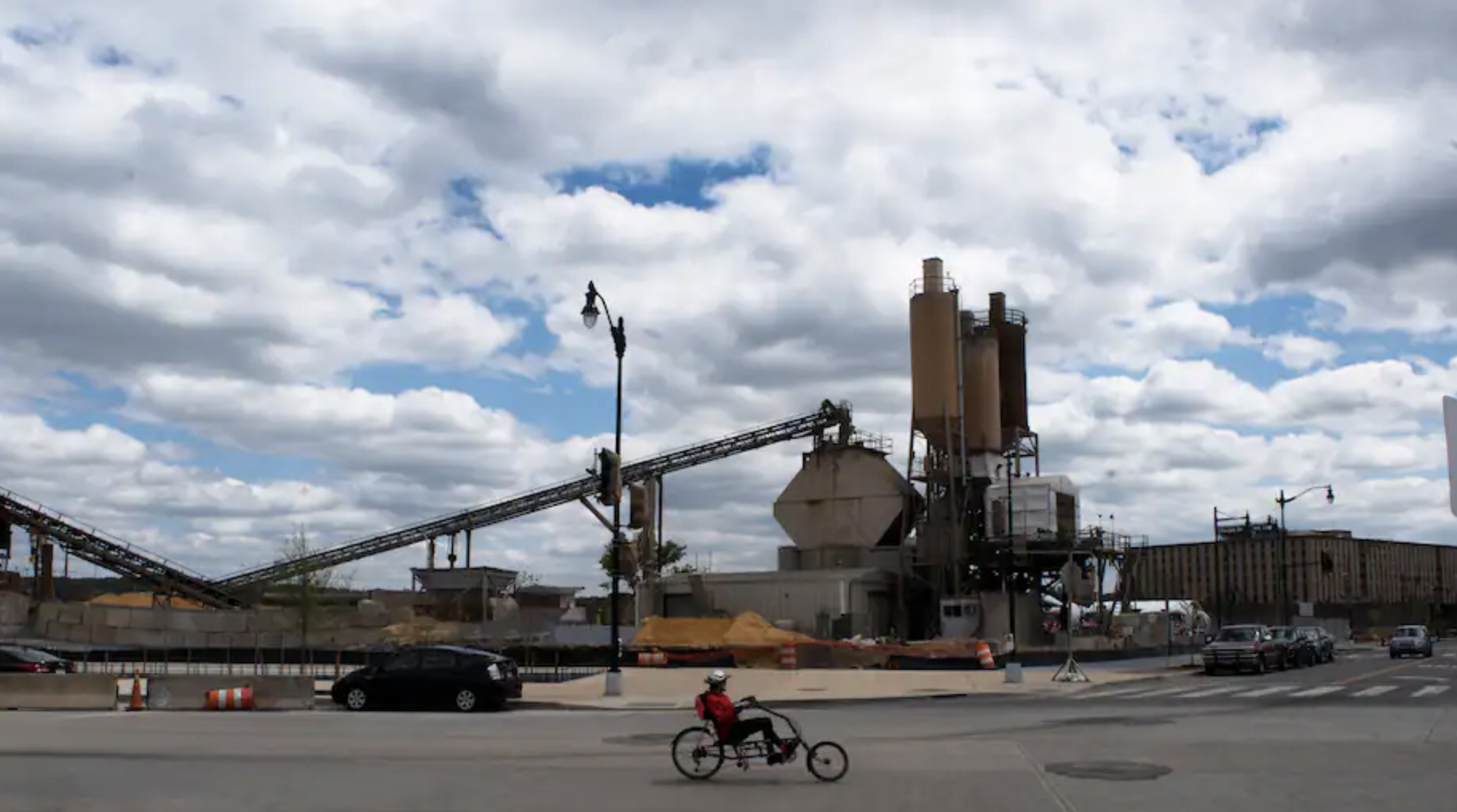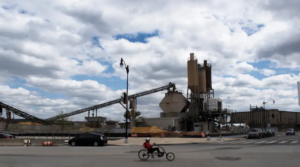
Buzzard Point residents have spent years fighting for a cleaner neighborhood. With newcomers, there’s hope there may be action.
By Courtland Milloy; Columnist
In the District’s rapidly gentrifying Buzzard Point neighborhood, newly arrived residents jog and bike through the dust of a cement plant, headed to and from luxury apartments along the Anacostia River in Southwest. They can rent for as much as $6,000 a month. Some are built on land once designated as brownfield sites and are located near a soon-to-be-demolished, decades-old bridge that contains hazardous materials.
 Longtime residents, mostly Black working-class homeowners and renters, have spent years fighting for a cleaner neighborhood. They advocated, they protested, they attended city council meetings. But they just didn’t have the political or economic clout to force developers and city officials to take meaningful action.
Longtime residents, mostly Black working-class homeowners and renters, have spent years fighting for a cleaner neighborhood. They advocated, they protested, they attended city council meetings. But they just didn’t have the political or economic clout to force developers and city officials to take meaningful action.
Now, with the influx of relatively affluent, well-educated residents, many of whom are White, there’s some hope that voices will be raised that won’t be so easily dismissed.
“They are out walking their pets, jogging, exercising, trying to keep themselves healthy, but at the same time their lungs are being coated with contaminated dust,” said Rhonda Hamilton, a community activist and member of the D.C. Advisory Neighborhood Commission representing the Buzzard Point area. “It continues to be a nightmare for us, all of that particulate matter putting us more at risk of dying from covid. But dirty air doesn’t care whose lungs it damages.”
A study published last week in the journal Science Advances found that African Americans are disproportionately affected by the most dangerous forms of air pollution in large part because toxic sites tend to be located near their homes.
Another research paper soon to be published in the journal Environmental Justice looked at air pollution in Buzzard Point and found higher rates of reported asthma than in other parts of the city, but the amount of particulate matter found during several years of monitoring did not exceed U.S. Environmental Protection Agency limits.
“Does this mean that the air at Buzzard Point has been safe?” Shizuka Hsieh, associate professor of chemistry at Trinity Washington University and one of the authors of the paper, wrote in an email. “Or does it mean the current US EPA limits are inadequate for protecting human health? The lived experiences of residents tell us that the air is dusty and unhealthy. Levels of PM10 [particulate matter 10], a major component of fugitive dust from concrete batching plants, are high in Buzzard Point.”
There are two cement facilities in the neighborhood, plus mega electrical power substations and plans to erect several cellphone towers and to demolish the toxic Frederick Douglass Bridge, which spans the Anacostia River.
Fredrica “Rikki” Kramer, a 40-year Southwest resident and a member of the Advisory Neighborhood Commission that includes Buzzard Point, said there will still be a challenge getting newcomers to focus on the broader issues of racism and economic injustice, “They come in here not noticing the human suffering, but the new opportunities brought on by all the development.”
Buzzard Point is home of both the Nationals baseball stadium and the D.C. United soccer stadium.
“I have this conversation all the time: ‘We had a dead waterfront, now it’s come back to life,’ ” said Kramer, who is White. “I say, that’s terrific but there are some things we have to do differently and one is not ignoring the people who are suffering through this process.”
Geri McClain, 70, a lifelong resident of Southwest, lives just a few blocks from a cement plant and a substation.
“I feel like a prisoner in my home,” she said. “There is dust everywhere. Diesel fumes, noise starting at 6 a.m. and into the wee hours of the night. My dog is constantly scratching and doesn’t want to go outside anymore. As soon as one construction project ends, another begins. It’s so frustrating.”
Asked what she thought it would take to get the city to act, McClain said, “If the rich White people moving in don’t want the dust and noise, maybe they will try to do something about it. Because up to this point, the city has not cared about what happens to the Black people.”
Black residents are certainly not sitting around waiting on rich White people to save them. They continue to advocate for themselves. And they have already formed interracial coalitions to improve their lives.
Chris Williams, a researcher at the University of Maryland and editor in chief of the Southwest Voice newspaper, is part of a group of activists — Black and White — ramping up the heat on city officials to clean the air and provide more affordable housing.
His newspaper has been instrumental in bringing diverse groups of concerned residents together and monitors the impact of gentrification in Buzzard Point.
“There is no question that this effort to attack the offending industries in Buzzard Point is directly related to the arrival of more high-income nonminority residents,” Williams said, who is Black, “because at the end of the day, they will be suffering from the same conditions as the others.”
I asked D.C. Council Chairman Phil Mendelson why the polluted air in Buzzard Point hadn’t been cleaned up.
He spoke frankly.
“The reason why we have these conditions is because nobody cared,” he said, adding, “and now we have woken up to this and realize that equity in housing and land use is important.”
Was the arrival of White newcomers bringing about this new awakening?
“I would say probably,” Mendelson said, “but the situation should be changing anyway because we need to recognize that we pay for the consequences of environmental racism, primarily through health-care cost and other social ills.”
Hsieh, the researcher at Trinity Washington, echoed the sentiment, saying the root of the problem was “not valuing each other.”
“If we value each other, we won’t make residents endure the hazards of construction and demolition for years, clean up the air, and then kick them out of their homes and communities when the construction and concrete-batching is all done,” she said.
Kicking Black residents out of their communities — that is how the gentrification story usually ends. But this one could turn out differently, if a community in flux finds a way to achieve a common goal — breathing clean air — in an economically and racially diverse neighborhood.
This was originally posted on The Washington Post.
